Themed collection Most cited Features from 2016, 2017

Stereospecific functionalizations and transformations of secondary and tertiary boronic esters
This feature article discusses the range of stereospecific transformations available to enantioenriched boronic esters, and their applications in synthesis.
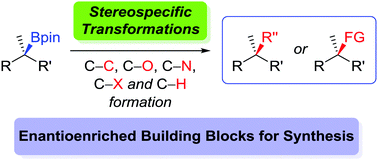
Chem. Commun., 2017,53, 5481-5494
https://doi.org/10.1039/C7CC01254C
C–H functionalization by high-valent Cp*Co(III) catalysis
Significant progress has been accomplished in directed C–H functionalization through the use of earth-abundant and inexpensive first-row transition metals.

Chem. Commun., 2017,53, 3165-3180
https://doi.org/10.1039/C6CC09651D
Quantifying and understanding the steric properties of N-heterocyclic carbenes
This Feature Article presents and discusses the use of different methods to quantify and explore the steric impact of N-heterocyclic carbene (NHC) ligands.
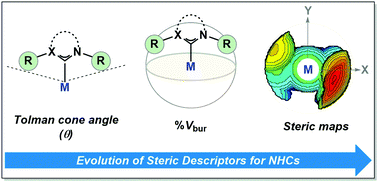
Chem. Commun., 2017,53, 2650-2660
https://doi.org/10.1039/C7CC00255F
Rigidification or interaction-induced phosphorescence of organic molecules
This feature article presents the principles and most recent examples of organic molecules in which long lived and highly intense room-temperature phosphorescence is switched on by rigidification of the matrix in a crystal or in a polymer or by interaction with other molecules.
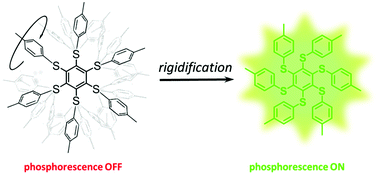
Chem. Commun., 2017,53, 2081-2093
https://doi.org/10.1039/C6CC09288H
Long range electrostatic forces in ionic liquids
Experimental evidence for long range surface forces in ionic liquids is collated and examined, key outstanding questions are identified, and possible mechanisms underpinning these long range forces are explored.
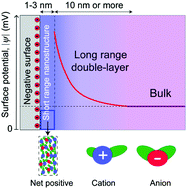
Chem. Commun., 2017,53, 1214-1224
https://doi.org/10.1039/C6CC08820A
Biological and related applications of pillar[n]arenes
This review article summarizes the advance of pillar[n]arene chemistry in terms of its application in biological and related fields.
![Graphical abstract: Biological and related applications of pillar[n]arenes](/en/Image/Get?imageInfo.ImageType=GA&imageInfo.ImageIdentifier.ManuscriptID=C6CC08967D&imageInfo.ImageIdentifier.Year=2017)
Chem. Commun., 2017,53, 677-696
https://doi.org/10.1039/C6CC08967D
Properties and emerging applications of mechanically interlocked ligands
We discuss the properties and potential future applications in catalysis, sensing and materials of ligands based on mechanically interlocked molecules.
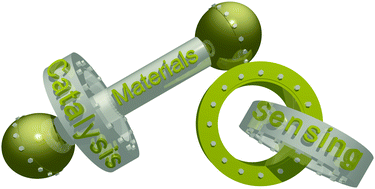
Chem. Commun., 2017,53, 298-312
https://doi.org/10.1039/C6CC07377H
Fluorescent glycoprobes: a sweet addition for improved sensing
We highlight recent progress from our labs for the development of fluorescent glycoprobes for sensing ions/lectins and targeted detection of intracellular species, including the construction of their 2D material composites for targeted fluorescence imaging and theranostics.
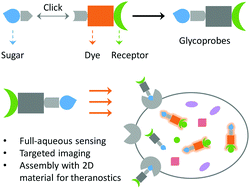
Chem. Commun., 2017,53, 82-90
https://doi.org/10.1039/C6CC06875H
Atomic and molecular layer deposition: off the beaten track
ALD archetype and deviations from it.
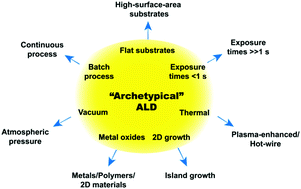
Chem. Commun., 2017,53, 45-71
https://doi.org/10.1039/C6CC05568K
Beyond methylammonium lead iodide: prospects for the emergent field of ns2 containing solar absorbers
In this review we look beyond CH3NH3PbI3 to other ns2 containing solar absorbers, with the aim of identifying those materials likely to achieve high efficiencies.
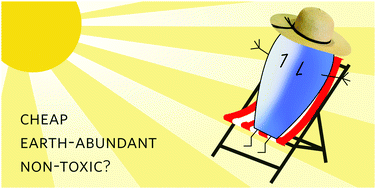
Chem. Commun., 2017,53, 20-44
https://doi.org/10.1039/C6CC06475B
Efficient complexation between pillar[5]arenes and neutral guests: from host–guest chemistry to functional materials
This feature article covers the molecular recognition of pillar[5]arenes and neutral guests, and its application in making supramolecular structures, polymers and functional materials.
![Graphical abstract: Efficient complexation between pillar[5]arenes and neutral guests: from host–guest chemistry to functional materials](/en/Image/Get?imageInfo.ImageType=GA&imageInfo.ImageIdentifier.ManuscriptID=C6CC03999E&imageInfo.ImageIdentifier.Year=2016)
Chem. Commun., 2016,52, 9858-9872
https://doi.org/10.1039/C6CC03999E
Halogen bonding anion recognition
The development of solution-based anion receptor molecules which exploit halogen bonding interactions is an emerging area of research. This Feature Article reviews recent advances which have been made in this rapidly developing field, surveying the use of iodoperfluoroarene, haloimidazolium and halotriazole/triazolium halogen-bond-donor motifs in anion receptor design and describing the application of mechanically interlocked rotaxane and catenane frameworks as halogen bonding anion host systems.
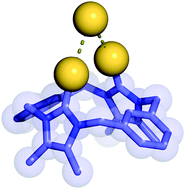
Chem. Commun., 2016,52, 8645-8658
https://doi.org/10.1039/C6CC03638D
Towards medicinal mechanochemistry: evolution of milling from pharmaceutical solid form screening to the synthesis of active pharmaceutical ingredients (APIs)
Development of mechanochemistry for API synthesis and pharmaceutical solid form screening signals the emergence of medicinal mechanochemistry – a discipline at the interface of medicinal chemistry and sustainable synthesis.
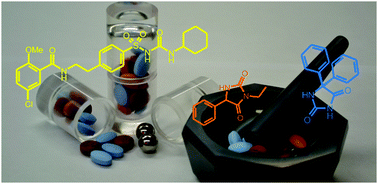
Chem. Commun., 2016,52, 7760-7781
https://doi.org/10.1039/C6CC02015A
Rational control of nano-scale metal-catalysts for biomass conversion
This feature article discusses the rational control of nano-scale metal catalysts for catalytic biomass transformation.
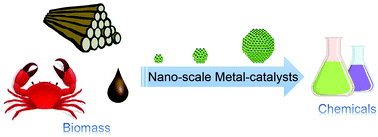
Chem. Commun., 2016,52, 6210-6224
https://doi.org/10.1039/C6CC00336B
Rhodium-catalyzed annulation of arenes with alkynes through weak chelation-assisted C–H activation
This feature article reviews the recent achievements of rhodium-catalyzed annulation of arenes with alkynes through weak chelation-assisted C–H activation, which sets a stage for the synthesis of diverse appealing polycyclic compounds.
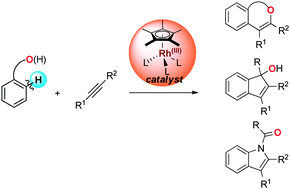
Chem. Commun., 2016,52, 2872-2884
https://doi.org/10.1039/C5CC09180B
Experimental investigation of anion–π interactions – applications and biochemical relevance
Anion–π interactions, intuitively repulsive forces, turned from controversial to a well-established non-covalent interaction over the past quarter of a century.

Chem. Commun., 2016,52, 1778-1795
https://doi.org/10.1039/C5CC09072E
Semiconductor and carbon-based fluorescent nanodots: the need for consistency
The need for establishing the bases and definitions of photoluminescent nanodots is discussed and their state-of-the-art in analytical and biomedical research fields is highlighted.
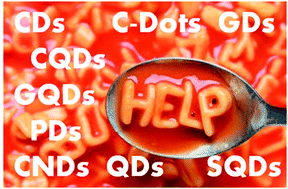
Chem. Commun., 2016,52, 1311-1326
https://doi.org/10.1039/C5CC07754K
Boron clusters in luminescent materials
Recent advancements in luminescent materials containing polyhedral boron clusters are summarised in this review article.
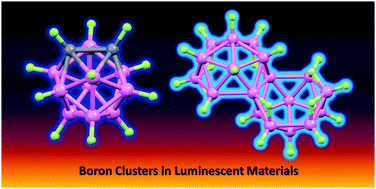
Chem. Commun., 2016,52, 1070-1093
https://doi.org/10.1039/C5CC08213G
Pharmaceutical cocrystals: along the path to improved medicines
Cocrystals, a long known but understudied class of crystalline solids, have attracted interest from crystal engineers and pharmaceutical scientists in the past decade and are now an integral part of the preformulation stage of drug development.
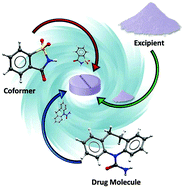
Chem. Commun., 2016,52, 640-655
https://doi.org/10.1039/C5CC08216A
Photocatalytic and photoelectrocatalytic reduction of CO2 using heterogeneous catalysts with controlled nanostructures
Recent advances in photocatalytic and photoelectrocatalytic reduction of CO2 with H2O using semiconductor-based catalysts have been highlighted.
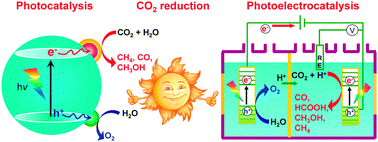
Chem. Commun., 2016,52, 35-59
https://doi.org/10.1039/C5CC07613G
About this collection
We are delighted to present a collection showcasing the 10 Most Cited ChemComm Feature articles from 2016 and from 2017. This provides an easy way to read about some of the most exciting and recent research, in areas across the chemical sciences. We hope you enjoy reading this collection!